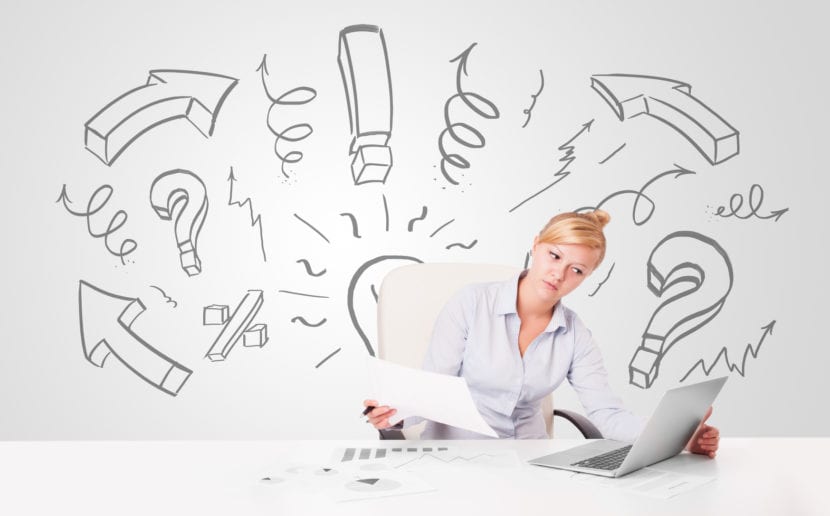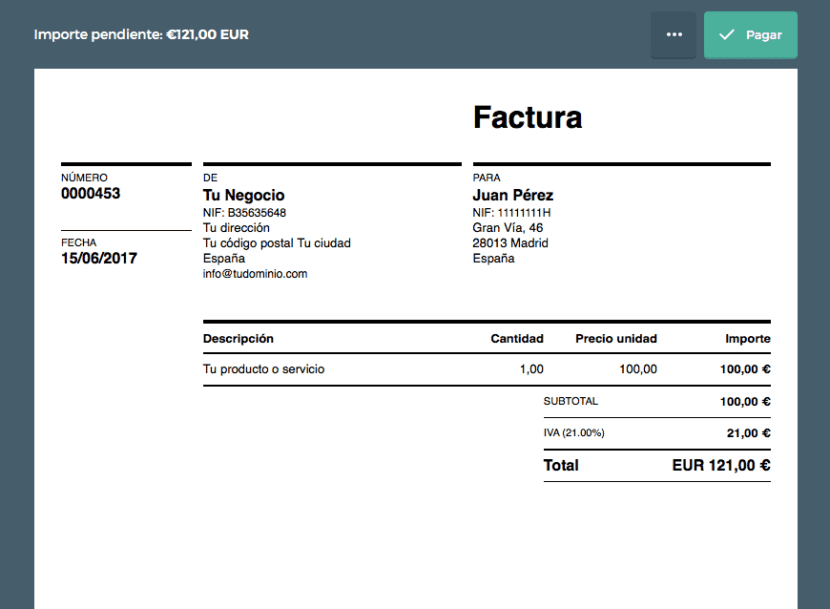
When starting as a freelancer, one of the issues that should be specified will be the correct preparation of an invoice with a autonomous invoice model. It is an essential document where the information necessary to execute a transaction or to carry out the purchase of goods or services will be reflected.
The delivery of invoices to clients will also make possible the possibility of developing the corresponding annotations in the sales and income books, which will be the accounting basis for calculating the taxes to be paid.
Failure to issue this type of document in the appropriate cases will make the self-employed person incur a shadow economy, and may face a tax penalty for said fact.
The invoices must be numbered consecutively and kept as a copy of the issues made. In their calculations, the VAT and personal income tax percentages corresponding to the activity carried out must be included.
On many occasions, the self-employed have doubts about the concepts to be handled, as well as about data and requirements that will have to be met so that a document of this type is being prepared according to the existing regulations.
If this issue is not understood and mastered well, it is almost certain that the self-employed person will end up having problems with the Treasury.
Let's review some essential aspects to consider.
Invoice for freelancers: Data to include
For an invoice to be valid, it will have to include essential minimum data.
In the case of not reflecting decisive information, or if some of the exposed data has errors, it will be necessary to issue a corrective invoice.

The main sections that the document will have will be the following:
- Details of who issues the invoice
- Details of who receives the invoice
- VAT tax rate (if applicable)
- Total amount to be paid
- Withholding percentage in personal income tax (if applicable)
- Date of execution of operations
- Date the invoice was issued
- Data relating to the operation in question
- Invoice number
- Tax quota (If applicable).
In data of who issues the invoiceInformation such as the name and surname of the person, their full corporate name, the Tax identification number plus their address (NIF) will be included. In the information of who receives the invoiceIf the recipient of the same is a natural person, their name and surnames, company name if it were a company, address and NIF will be included.
Referring to the operation in question and its description, it is necessary to detail complete information in order to be able to determine the taxable base of the tax.
The totalized amount of the consideration will be included including the unit price without tax for each operation, discounts or rebates must also be included, "if applicable", which are not included in the unit price.
At invoice numberAs in the series, the numbering must be successive and continue in the corresponding order with the given issue date. The invoices that are issued must be numbered in consecutive order; although every year a new series is usually started. Invoices should not be numbered by series on a monthly basis.
Different series could be created in the event that there are several establishments, operations of different natures are carried out or in cases of rectifying invoices.
This type of rectifying invoices They should not be issued with the same number and series as the original invoice. Both types are different bills and should not be mixed.
Invoice templates
There are different types of invoice model for freelancers.
- Invoice model without VAT for freelancers and SMEs
- VAT invoice model for the self-employed and SMEs
- Invoice model with VAT and personal income tax for the self-employed and SMEs
- Simplified invoice model for freelancers and SMEs
- Intra-community invoice model for the self-employed and SMEs
- Invoice template for dependent self-employed
Let us specify some important information for some of these models.
Invoice model without VAT for freelancers and SMEs

Regarding the invoice model without VAT for freelancers and SMEs, It must be recognized that there will be types of professional activities and products exempt from applying VAT.
It is essential to understand that making an invoice without VAT will not be the same as not making an invoice. Although the activity is exempt from VAT, it will have to be prepared and declared personal income tax.
Some of the products and activities that are exempt from VAT are the following.
Medical or sanitary operations, in this case veterinary and dental services for aesthetic purposes will be included. Educational services; Insurance and financial operations; Non-profit sports, social and cultural services. Real estate products; Second-hand purchases and rentals; Postal services; Lotteries and bets.
Simplified invoice model for freelancers and SMEs
Regarding the simplified invoice model for the self-employed and SMEs, in 2013 this invoice was introduced. It replaced the ticket that was issued in all operations of up to € 3.000 (VAT included).
From that moment, the ticket is not accepted as an accounting document justifying an expense and the simplified invoice may be issued by freelancers in small operations that do not exceed € 400 (VAT included), if a corrective invoice would have to be issued or for activities in which it was customary to issue a ticket, if the amount does not exceed € 3.000 (VAT included).
The activities that allow issuing a simplified invoice will be:
- Transport of people and their luggage
- Use of toll motorways
- Retail sales
- Hairdressing services - beauty salons
- Dry cleaning and laundry services
- Hotel and restaurant services
- Ambulance services
- Service and use of sports facilities
- Sales or home-based services of the consumer
- Services provided by discos and dance halls
- Parking and vehicle parking
About the data and content that this type of simplified invoice must have, we can summarize that must be explicit regarding the sender, his name and surname, business name and NIF. The tax rate and optionally the expression "VAT included"; Date of the operation, if it is different from the date of issue. If the invoice is rectifying, include the reference of the rectified invoice. Identification of the goods that are delivered or the services provided; Total consideration; Number and series; Expedition date.
If the following circumstances occur: mention of «Special regime for used goods«; in exempt operations, reference to the regulations; mention "billing by recipient”; mention "Special Regime for Travel Agencies".
Intra-community invoice model for the self-employed and SMEs

In the intra-community invoice model for the self-employed and SMEs, if an invoice is issued for a client in a European Union country, the VAT that will be applied will depend on whether it is a good or service.
If a good is invoiced to a company or self-employed person, the invoice is carried out without VAT if the client is registered in the "Registry of Intracommunity Operators" - ROI. If a good is invoiced but it is to a final consumer, the VAT of the country applied to that good will be applied. It will involve registration in the country, with the exception of not exceeding the sales tax limit set by the tax authorities of the client's country.
In the case of billing a service, whether to a company or a self-employed person, an invoice is made without VAT, VAT deductible for the goods and services used to carry it out.
If a final consumer is being invoiced, the applicable Spanish VAT is applicable, except for television and electronic services, telecommunications and broadcasting, in which the applicable VAT is that of the client's country.
Invoice template for dependent self-employed
There is the dependent self-employed (Economically Dependent Self-Employed Workers) - TRADE. This is a freelancer who will bill at least 75% of the income received by the same client.
For this reason, Social Security grants them a type of protection in order to avoid abuse. They will have to invoice following the specific regulatory standards and since they are billing as self-employed, they will be subject to the same tax obligations as any other self-employed person: meaning quarterly self-assessment of VAT on invoices, quarterly installment payments on account of personal income tax, etc.
To bill, this type of self-employed person must take into account two fundamental aspects.
The first will be the VAT rate that you will be applying to your client. This may be 21%, 10% or 4%, and will depend on the service or product in question that is invoiced. The second will be the withholding of personal income tax that you will be applying to your client for being a company or professional. The retention will be 15%, but those new self-employed may apply 7% during the first two years.
For the rest, the different mandatory contents of an invoice sheet must be taken into account. We talk about specific customer data, name, business name, NIF or CIF, address. Develop the description of the service or product that is offered. The price of services and products. VAT rate to be applied. Tax quota, which will be the part of the amount that will correspond to VAT. Total amount, IRPF Withholding, which is subtracted from the tax base.
To find out what conditions a dependent self-employed person must meet, and before entering into any agreement, we recommend reading Chapter III of the Workers' Statute, which is dedicated exclusively to the dependent self-employed.